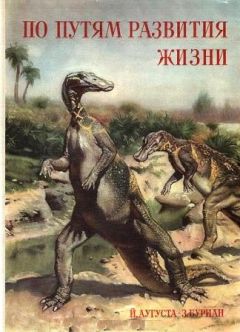Томас Метцингер - Туннель Эго
12. Ernst Poppel, Mindworks: Time and Conscious Experience (New York: Harcourt Brace Jovanovich, 1988); E. Ruhnau, «Time-Gestalt and the Observer,» in Thomas Metzinger, ed., Conscious Experience (Thorverton, UK, and Paderborn, Germany: mentis & Imprint Academic, 1995).
13. R. M. Halsey & A. Chapanis, «Number of Absolutely Identifiable Hues,» Jour. OpticalSoc. Amer. 41(12):1057-58 (1951). For an excellent philosophical discussion, see D. Raffman, «On the Persistence of Phenomenology,» in Thomas Metzinger, ed., Conscious Experience (Thorverton, UK, and Paderborn, Germany: mentis & Imprint Academic, 1995).
14. Raffman, «On the Persistence of Phenomenology,» 295 (1995).
15. Clarence I. Lewis, Mind and the World Order (New York: Scribner's, 1929). See also Daniel C. Dennett, «Quining Qualia,» in A. J. Marcel & E. Bisiach, Consciousness in Contemporary Science (New York: Oxford University Press, 1988).
16. Diana Raffman, Language, Music, and Mind (Cambridge, MA: MIT Press, 1993).
17. P. Churchland, «Eliminative Materialism and the Propositional Attitudes,» Jour. Phil. 78(2):67–90 (1981).
18. Quoted after the extensively revised 1991 edition by M. David Enoch and Hadrian N. Ball, Uncommon Psychiatric Syndromes (London: Butterworth-Heinemann, 1991), 167.
19. I am grateful to Dr. Richard Chapman of the University of Utah's Pain Research Center for pointing out to me the concept of an «immunculus»: the network of natural autoantibodies targeting extracellular, membrane, cytoplasmic, and nuclear self-antigens. The repertoires of natural auto antibodies are surprisingly constant in healthy persons and, independently of gender and age, are characterized by only minimal individual variations.
CHAPTER 3
1. M. Botvinick & J. Cohen, «Rubber Hand 'Feels' Touch That Eyes See,» Nature 391:756 (1998).
2. K. C. Armel & V. S. Ramachandran, «Projecting Sensations to External Objects: Evidence from Skin Conductance Response,» Proc. Roy. Soc. Lond. 270:1499–1506 (2003).
3. M. R. Longo et al., «What Is Embodiment? A Psychometric Approach,» Cognition 107:978–998 (2008).
4. See Antonio Damasio, The Feeling of What Happens: Body, Emotion, and the Making of Consciousness (London: Vintage, 1999), 19. See also A. D. Craig, «How Do You Feel? Interoception: The Sense of the Physiological Condition of the Body,» Nat. Rev. Neurosci. 3:655–666 (2002) and «Interoception: The Sense of the Physiological Condition of the Body,» Curr. Opin. Neurobiol. 13:500–505 (2003).
5. For an excellent recent review-including a new, empirically informed synthesis-of the classical intuition of David Hume (that the self is just a bundle of impressions and everything can be explained «bottom-up») as opposed to the classical Kantian intuition (self-consciousness is a necessary prior condition for experiencing the body as a whole and everything must be explained «top-down»), see F. De Vignemont et al., «Body Mereology,» in Gunther Knoblich et al., eds., Human Body Perception from the Inside Out (New York: Oxford University Press, 2006).
6. The terminology was never entirely clear, but it frequently differentiated between an unconscious «body schema» and a conscious «body image.» The body schema (a notion introduced in 1911 by Sir Henry Head and Gordon Holmes, two British neurologists) would be a functional entity, providing an organized model of the bodily self in the brain, whereas the body image would also include our conscious perceptions of our own body as well as thoughts about and attitudes toward it. For a philosophical perspective on the conceptual confusion surrounding both notions, see Shaun Gallagher, How the Body Shapes the Mind (New York: Oxford University Press, 2005). For an excellent review of the empirical literature, see A. Maravita, «From 'Body in the Brain' to 'Body in Space': Sensory and Intentional Components of Body Representation,» in Knoblich et al., Human Body Perception (2006).
7. A. Maravita & A. Iriki, «Tools for the Body (Schema),» Trends Cog. Sci. 8:79–86 (2004). An excellent recent overview is A. Iriki & O. Sakura, «The Neuroscience of Primate Intellectual Evolution: Natural Selection and Passive and Intentional Niche Construction,» Phil. Trans. R. Soc. B 363:222941 (2008).
8. See A. Iriki et al., «Coding of Modified Body Schema During Tool-Use by Macaque Post-Central Neurons,» Neuroreport 7:2325-30 (1996); and Maravita & Iriki, «Tools for the Body (Schema)» (2004).
9. J. M. Carmena et al., «Learning to Control a Brain-Machine Interface for Reaching and Grasping by Primates,» PLoS Biology 1:193–208 (2003).
10. Here is how Iriki and Sakura put this important point: «If external objects can be reconceived as belonging to the body, it may be inevitable that the converse reconceptualization, i.e., the subject can now objectify its body parts as equivalent to external tools, becomes likewise apparent. Thus, tool use may lead to the ability to disembody the sense of the literal flesh-andblood boundaries of one's skin. As such, it might be precursorial to the capacity to objectify the self. In other words, tool use might prepare the mind for the emergence of the concept of the meta-self, which is another defining feature of human intelligence.» See Iriki & Sakura, «The Neuroscience of Primate Intellectual Evolution,» 2232 (2008).
11. See O. Blanke & T. Metzinger, «Full-Body Illusions and Minimal Phenomenal Selfhood,» Trends Cog. Sci. 13(1):7-13 (2009).
12. See T. Metzinger, «Out-of-Body Experiences as the Origin of the Concept of a 'Soul,'» Mind and Matter 3(1):57–84 (2005).
13. E. R. S. Mead, The Doctrine of the Subtle Body in Western Tradition (London: John M. Watkins, 1919).
14. It is important to be clear about the potential ontological conclusions: Even if a fully reductive explanation of all subtypes of OBEs should be achieved-and even if my hypothesis about the history of the concept of a soul is correct-it still remains logically possible that souls do exist. True, we would no longer need the concept of a soul for the purposes of science or philosophy; it would no longer figure in any rational, data-driven theory about the human mind. Logical possibility is something very weak, but it is hard to prove the nonexistence of something, and it always remains possible that one day we will discover a new sense in which the soul is not an empty concept at all.
15. It is interesting to note how the earliest historical meaning of the word «information» in English was the act of informing, or giving form or shape to the mind. What I call the «self-model» is exactly this: the «inner form» an organism gives to itself, the shaping of a mind.
16. Susan J. Blackmore, Beyond the Body: An Investigation of Out-of-theBody Experiences (London: Granada, 1982).
17. In addition to Beyond the Body, see S. Blackmore, «A Psychological Theory of the Out-of-Body Experience,» Jour. Parapsychol. 48:201–218 (1984); and S. J. Blackmore, «Where Am I? Perspectives in Imagery and the Out-of-Body Experience,» Jour. Mental Imagery 11:53–66 (1987).
18. E. Waelti, Der dritte Kreis des Wissens (Interlaken: Ansata, 1983), 18, 25. English translation by T. Metzinger.
19. C. S. Alvarado, «Out-of-Body Experiences,» in E. Cardena et al., eds., Varieties of Anomalous Experience: Examining the Scientific Evidence (Washington, DC: American Psychological Association, 2000).
20. See, for example, J. Palmer, «A Community Mail Survey of Psychic Experience,» Jour. Am. Soc. Psychical Res. 73:21–51 (1979); S. Blackmore, «A Postal Survey of OBEs and Other Experiences,» Jour. Soc. Psychical Res. 52:225–244 (1984).
21. See Alvarado, «Out-of-Body Experiences» (2000) for an overview of many studies; Blackmore, «Spontaneous and Deliberate OBEs: A Questionnaire Survey,» Jour. Soc. Psychical Res. 53:218–224 (1986); Harvey J. Irwin, Flight of Mind (Metuchen, NJ: Scarecrow Press, 1985), 174 ff; O. Blanke & C. Mohr, «Out-of-Body Experience, Heautoscopy, and Autoscopic Hallucination of Neurological Origin: Implications for Neurocognitive Mechanisms of Corporeal Awareness and Self Consciousness,» Brain Res. Rev. 50:184–199 (2005).
22. O. Devinsky et al., «Autoscopic Phenomena with Seizures,» Arch. Neurol. 46:1080-8 (1989).
23. See, for example, P. Brugger, «Reflective Mirrors: Perspective-Taking in Autoscopic Phenomena,» Cog. Neuropsychiatry 7:179–194 (2002); Brugger et al., «Unilaterally Felt Presences: The Neuropsychiatry of One Invisible Doppelganger,» Neuropsychiatry, Neuropsychology, and Behavioral Neurology 9:114–122 (1996); Brugger et al., «Illusory Reduplication of One's Own Body: Phenomenology and Classification of Autoscopic Phenomena,» Cog. Neuropsychiatry 2:19–38 (1997); Devinsky et al., «Autoscopic Phenomena» (1989).
24. U. Wolfradt, «AuGerkorpererfahrungen (AKE) aus differentiellpsychologischer Perspektive,» Zeitschriftf. Paraps. u. Grenzgeb. D. Psych. 42/43:65-108 (2000/2001); U. Wolfradt & S. Watzke, «Deliberate Out-ofBody Experiences, Depersonalization, Schizotypal Traits, and Thinking Styles,» Jour. Amer. Soc. Psychical Res. 93:249–257 (1999).
25. H. J. Irwin, «The Disembodied Self: An Empirical Study of Dissociation and the Out-of-Body Experience,» Jour. Parapsych. 64(3):261–277 (2000).
26. See Wolfradt, «AuGerkorpererfahrungen (AKE)» (2000/2001).
27. Ibid. Other studies find only 22–36 percent; see Alvarado, «Out-ofBody Experiences» (2000).
28. Wolfradt, «AuGerkorpererfahrungen» (2000/2001).
29. C. Green, Out-of-the-Body Experiences (London: Hamish Hamilton, 1968).
30. O. Blanke et al., «Stimulating Illusory Own-Body Perceptions,» Nature 419:269–270 (2002).
31. For a more detailed hypothesis concerning the role of the temporoparietal junction, see Blanke et al., «Out-of-Body Experience and Autoscopy of Neurological Origin,» Brain 127:243–258 (2004); S. Bunning & O. Blanke, «The Out-of-Body Experience: Precipitating Factors and Neural Correlates,» Prog. Brain Res. 150:333–353 (2005); O. Blanke & S. Arzy, «The Out-of-Body Experience: Disturbed Self-Processing at the Temporo-Parietal Junction,» The Neuroscientist 11:16–24 (2005); and F. Tong, «Out-of-Body Experiences: From Penfield to Present,» Trends Cog. Sci. 7:104–106 (2003).
32. Blanke et al., «Linking Out-of-Body Experience and Self-Processing to Mental Own-Body Imagery and the Temporoparietal Junction,» Jour. Neurosci. 25:550–557 (2005).
33. For more on this point, see Blanke & Metzinger, «Full-Body Illusions and Minimal Phenomenal Selfhood,» 13(1):7-13 (2009).
34. See Wolfradt, «AuGerkorpererfahrungen (AKE)» (2000/2001), 91.
35. Can you imagine what it would be like to look at yourself from the outside and shake your own hand? Henrik Ehrsson of the Karolinska Institute in Stockholm, Sweden, is one of the leading figures in self-model research. He created one of the classic full-body illusion experiments and also demonstrated that upper limb amputees can be induced to experience a rubber hand as their own and extended the field by focusing on behavioral and neuroimaging evidence. Recently, members of his team managed to not only trigger the illusion that another person's body was one's own, but also create the phenomenal experience of being in that other person's body while actually facing their own body and shaking their own hand. See Valerie I. Petrovka & H. Henrik Ehrsson, «If I Were You: Perceptual Illusion of Body Swapping,» PLoS ONE 3(12):e3832 (2008), H. Henrik Ehrsson, «The Experimental Induction of Out-of-Body Experiences,» Science 3127:1048 (2007), H. Henrik Ehrsson et al., «Upper Limb Amputees Can Be Induced to Experience a Rubber Hand as their Own,» Brain 131:3443–3452; Tamar R. Makin et al., «On the Other Hand: Dummy Hands and Peripersonal Space,» Beh. Brain. Res. 191:1-10 (2008).
36. See W. Barfield et al., «Presence and Performance Within Virtual Environments,» in Woodrow Barfield & Thomas A. Furness III, eds., Virtual Environments and Advanced Interface Design (New York: Oxford University Press, 1995). See also M. V. Sanchez-Vives & M. Slater, «From Presence to Consciousness Through Virtual Reality,» Nat. Rev. Neur. 6.332339 (2005). Mel Slater, for many years a leading researcher in the field of virtual reality, has recently demonstrated that the feeling of ownership can also be induced for simulated body parts in virtual environments (rather than, as in our experiment, having people still look at their «real» body). Obviously, this permits experiments that would never have been possible in the physical world, including real-time modifications of virtual bodies not only in terms of length, size, and appearance, but also complex motion patterns. As the authors put it: «For the future our work also suggests that people can have their 'self' enter the virtual domain in a genuine sense of the word, and not just metaphorically as in current day computer games and online communities. In combination with BCI [brain-computer interfaces] we envisage a functioning virtual body that is felt as their own by participants, with a significant application in VR training, limb prosthetics, and entertainment.» See M. Slater et al., «Towards a Digital Body: Th Virtual Arm Illusion,» Frontiers Hum. Neurosci. 2:6. doi:10.3389/neuro.09.006.2008.
37. See www.dukemednews.org/news/article.php?id=10218.
38. See, for example, R. A. Sherman et al., «Chronic Phantom and Stump Pain Among American Veterans: Results of a Survey,» Pain 18:83–95 (1984).
39. S. W. Mitchell, «Phantom Limbs,» Lippincott's Mag. Pop. Lit. & Sci. 8:563–569 (1871).
40. See V. S. Ramachandran et al., «Scientific Correspondence: Touching the Phantom Limb,» Nature 377:489–490 (1995); V. S. Ramachandran & D. Rogers-Ramachandran, «Synaesthesia in Phantom Limbs Induced with Mirrors,» Proc. Roy. Soc. Lond. B:377–386 (1996); and V. S. Ramachandran & Sandra Blakeslee, Phantoms in the Brain (New York: William Morrow, 1998).




